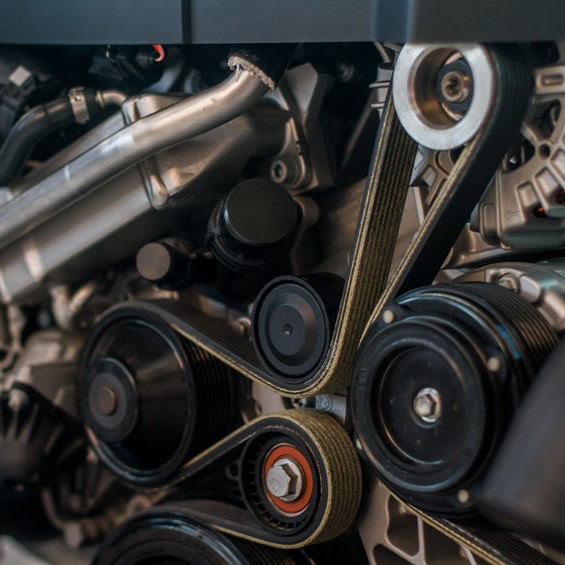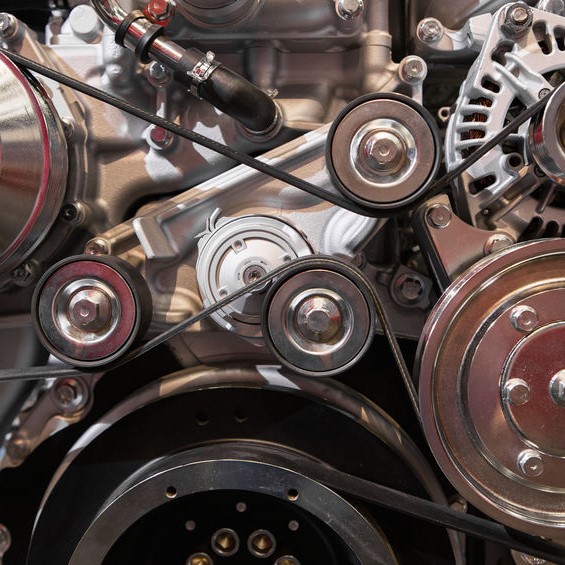
How long do belts last on a car?
Car belts are often referred to as drive belts by mechanics. Knowing the terminology will help you understanding your mechanic. There are many components and parts to a car and car belts are essential in helping the mechanical parts function. Those mechanical parts and the car belts that help them function are the alternator, water pup, and steering pump. A simple way that the purpose of car belts explained is they distribute power between the different engine components by creating friction between the belt and pulley.
The cars today don’t have all the car belts that we’ve described above, instead, auto manufacturers design cars now to operate on a single belt. That one belt is called a serpentine belt and it operates all the things we described in the first paragraph.
How often should the serpentine belt be replaced can vary based on your driving, but the recommended replacement every three years. The serpentine belt in many cars manufactured from 2005 and forward is from EPDM, a rubber compound. Those belts can last for ten years or 150,000 miles, again, depending on your driving style.
How often should you change your belts on your car?
While replacement of car belts and hoses is based on the age of the car or the mileage on a car, having your car belts checked with each oil change, or more frequent, is recommended. The amount you drive your car and what road and weather conditions you drive through can affect the life of car belts.
If you drive in the rain a lot, the water can wear car belts down and extreme cold or hot temperatures can affect the lifespan of car belts. Most oil and lube centers check the belts, chains, filters, and hoses automatically as part of their service, but mention it when you take your car in for service. A general rule that mechanics recommend is every 30,000 miles change the V-Belt and every 50,000 miles change the serpentine belt and timing belt if they don’t need changing sooner.
How do I know if my drive belt is bad
Because cars today only have one belt, the serpentine belt, it is a critical part of car operating. It functions while the car’s engine is running and when it breaks, your car won’t run anymore. Sometimes, there are indications that the belt is getting bad. If you are experiencing any of these things, schedule an appointment with your mechanic ASAP to check your car belts:
- Squealing Noise: A squealing noise under the hood of your car is probably the serpentine belt has gotten misaligned or is slipping. A mechanic can diagnosis this and replace the belt if needed.
- AC and Power Steering Quit: The serpentine belt is one belt versus the many car belts that older cars had. When it is misadjusted, slipping, or broke, essentially, your car is broke. The power steering quits, the air conditioning quits, and the engine isn’t getting cooled anymore. All of this can cause safety issues and even ruin the engine. Preventative maintenance will keep this from happening and that means having the belt checked with each oil change or more frequently.
- Engine Overheats: The serpentine belt provide the fan and water pump power needed to keep the engine cool. When the serpentine belt isn’t working properly, or is broken, the engine will overheat because the water pump isn’t turning. If your car engine is overheating, take your car to the mechanic to have the engine checked. If it isn’t the serpentine belt, then it could be something else and a professional mechanic can advise.
- Cracks and Wear: Whether you have an older car with multiple car belts or you have a newer car with just a serpentine belt, the reason you want to have them inspected is to catch potential problems. Over time, they begin to crack, chunks get cut out of them, they even begin to separate, and these are things the mechanic will check before it happens, and can replace the belt before your car breaks down and leaves you stranded.
What happens if a belt breaks while driving?
When car belts break while you’re going down the road, several things can happen. An older car with multiple car belts, the power steering will quit, making it hard to steer and turn your car. A fan belt breaks, your car will overheat. With the newer cars, when the serpentine belt breaks, your engine will overheat, your power steering quits, and your car will stop.

Can you drive car with broken belt?
Mechanics are asked all the time if a customer can run car without belts, and if it is an older car, maybe, depends on which of the car belts is broken. If it is a newer car with a serpentine belt, no. As we have covered, the serpentine belt is essential in a car’s operation. It drives the water pump which is needed to keep an engine from overheating.
Remember, everything within a car engine works with precision. This gives you a smooth functioning car to drive and for that to precision to happen, it needs specific timing between the camshaft and crankshaft in order for the pistons and valves to work as intended.
There is either a timing belt or chain within your car engine that ensure this harmonization is happening at a precise rate and timing. What is the difference between car belts vs chains? The function of a timing chain is the same as a timing belt, with the only difference being that one is metal, and one is rubber.
Cars had timing chains up until the 1960s when car manufacturers designed timing belts, which is now the serpentine belt. Why? A rubber belt runs quieter than a metal chain and cost let to make. In recent years, some manufacturers have reintroduced the timing chain in some models, and your owner’s manual should define what your specific car has and what routine maintenance needs to happen. Call 630-932-4427 today for your belt repair in Lombard and Wheaton, IL.
